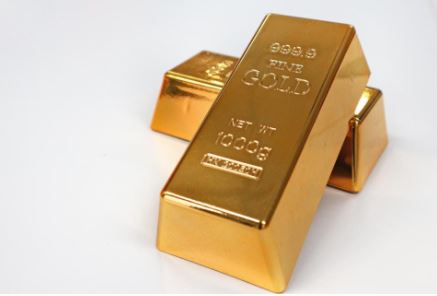There’s been a lot of talk about gold in the news the past year. I have been asked a variety of questions about investing in it throughout my career in the precious metals industry. Here are five frequently asked questions and what you should know before buying gold:
1. Why purchase gold or silver?
In “stable” times, I believe that at least 10% of one’s portfolio should be allocated to precious metals such as gold and silver for the purpose of diversification, and many experts, such as Ray Dalio, hold similar views.
The stock market’s plunge in March 2020 hurt countless Americans. Retirement accounts that took decades to build followed the market’s performance into double-digit losses.
Stock market volatility aside, the value of the dollar has been consistently diminishing. What does that mean for anyone holding cash reserves in their bank? A corresponding loss in purchasing power. Precious metals, which have increased in value the past several years, can offset that loss, with investors using the inverse relationship to protect their portfolios. Precious metals are a way to hedge against inflation and can even add stability to retirement accounts.
2. Is now a good time to buy gold?
The economy’s current state shows strong buy signals. The dollar is down, with some experts predicting more room to fall, and for good reason. As of February, the national debt was roughly $28 trillion, and Congress and the Federal Reserve have thrown trillions of dollars in relief at the Covid-19 crisis. The dollar’s position as the global reserve currency may be at risk because of actions the United States has taken to aid the economy.
According to the Bureau of Labor Statistics’ consumer price index, prices nowadays are about 53% higher than average prices since 2000. In other words, $1.00 in 2000 is equivalent to about $1.53 today.
What does all that mean?
• A $100,000 investment in gold in 2000 has the purchasing power of about $535,000 today.
• $100,000 left in cash in 2000 would buy roughly $65,000 worth of goods today.
Now with the national debt so high, what do you think cash versus gold will do over the next 5, 10, 20 years?
3. What kind of returns do physical gold and silver provide?
In 1946, the silver mercury dime was $0.10 face value, which was also the cost of a loaf of bread at that time. Similarly, the same silver mercury dime today is worth about $2.50 on average, based on my experience, and the same loaf of bread now costs $2 or more. That’s how precious metals succeed: They lock in your buying power.
I like to think of physical gold and silver as financial insurance against inflation, which provides the ability to “lock in” a specific rate. That being said, gold has outperformed the S&P Index since 2000, up roughly 514% versus 174%, as of this writing.
4. How is physical gold different from paper stock gold?
There are two main methods of investing in gold: paper and physical. Paper gold is for portfolio protection, used to diversify portfolios, which usually brings balance in times of market uncertainty. Physical gold is to protect your purchasing power, or as discussed earlier, to lock in your purchasing power.
Compared to paper stocks, physical gold provides investors with the ability to physically hold the investment in which they have full control over at all times.
A gold-priced “IOU” is still an “IOU.” Mining stocks and exchange-traded funds still present counterparty risk. There are also systematic risks involved. For example, by investing in a gold company’s share, you are exposing yourself to economic conditions in the company’s country of origin.
One thing you have to remember is that with these paper stocks, you don’t own the gold. Gold securities represent physical gold, but you don’t have the right to trade them in for the actual metal. Thus, you do not have the same protection against fiat currency or other major threats to the markets as you would with the metal itself.
5. What are the drawbacks and risks of physical gold?
As with any investment, there are some drawbacks to consider. One drawback of purchasing physical precious metals is the associated storage and insurance costs. Investments like stocks and bonds do not incur any storage costs. A precious metals individual retirement account (IRA) requires your metals to be stored at a depository such as Brinks, which is fully insured but incurs an annual storage fee. Purchasing metals to keep in your home may call for an initial investment in a safe/vault to keep the metals secure and may also require additional insurance with the possibilities of theft or natural disasters.
The opportunity cost of having your investment in physical metals instead of a dividend-rich stock could be considered another drawback. Physical metals will only generate income when you sell the metals, unlike quarterly dividends associated with some stocks.
When investors are ready to cash out their investment, they must also consider the liquidation process. Liquidating physical gold and silver may require shipping the metals to a reputable dealer. If the dealer you purchased from does not offer a buyback program, you will have to find another to purchase your metals.
Lastly, investors must remember there is always risk. While we can use historical trends to track the performance of precious metals, we cannot guarantee they will result in a positive return on investment. Like any other investment, precious metals could go down in value. Though its historical performance has shown it to be one of the safest investments, there is still some level of risk. Investors should fully consider all these aspects before committing to gold.
To learn more about investing in physical gold and silver, call 866-342-2257.
The information provided here is not investment, tax or financial advice. You should consult with a licensed professional for advice concerning your specific situation.
Published at on Forbes
ABOUT AMERICAN HARTFORD GOLD
American Hartford Gold is a Los Angeles, CA-based company that has built its reputation on helping individuals and families diversify and protect their wealth with precious metals. The company’s A+ rating can be viewed at http://www.bbb.org and its 5-star Customer Satisfaction Rating can be viewed at http://www.trustpilot.com.
American Hartford Gold is a trusted name that makes it simple for Americans to protect their savings and retirement using precious metals. They offer a wealth of precious metals information and a historical perspective that empowers both new and experienced investors.






